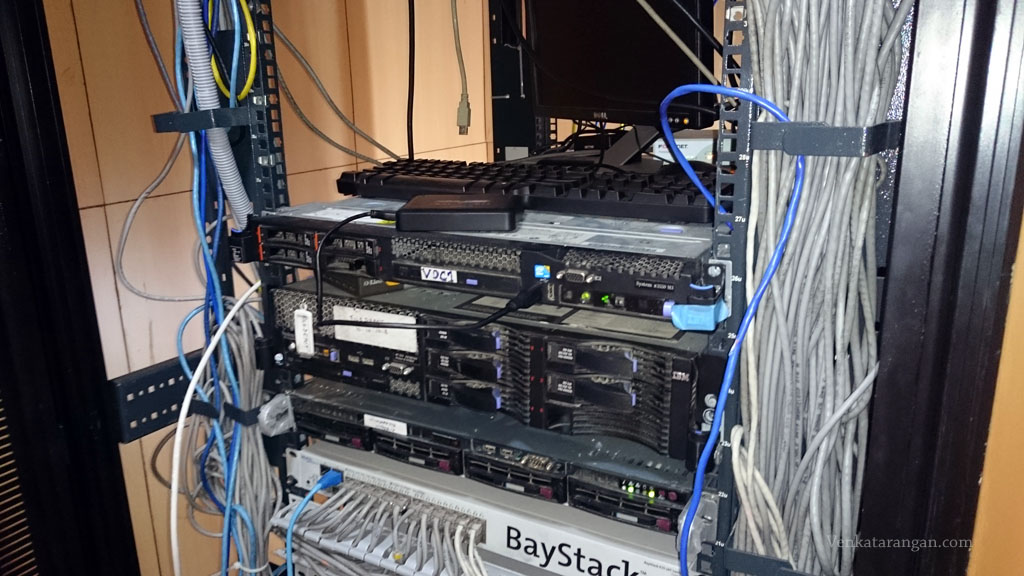As an IT Services firm we at Vishwak Solutions too have been running many servers on-premise for many years, these servers were handling Directory Services, email, file sharing, collaboration, Development, Testing and other work loads. Till three years back we were having nearly 3 server racks full of server hardware running on-prem. This meant CAPEX cost for procuring, OPEX costs for running, power, power backup, backup storage costs, air conditioning and real estate space. Adding to it was manpower cost for maintaining them.
We started moving the workloads one at a time to cloud services:
- Directory Services: Windows Active Directory to Azure Active Directory for online authentication
- Email/Calendar/Contacts: Microsoft Exchange Server to Office 365 Exchange Online
- Collaboration: Microsoft SharePoint Server to Office 365 SharePoint Online & Skype for Business. We got Yammer configured as well, but it’s not being used regularly, I see most communication happening within the teams over email and WhatsApp for reasons I am not able to fully understand
- File Sharing: Windows Server file shares to Office 365 OneDrive for Business
- Development: Local Visual SourceSafe to Microsoft Team Foundation Services Online & GitHub
- Test environments: Hyper-V images of Windows & Linux desktops to Microsoft Azure instances
With these done few months back, we are now running only 3 servers on-prem (as seen below) which we were able to accommodate in the Network switch rack itself. We were able to get the 3 server racks retired, saving us lot of physical space, power and cooling. The remaining 3 servers are running basic workloads like our Primary Active Directory for local LAN authentication and basic file storage for large file sharing and storage of VM images.
Unlike the hyped benefits of the cloud, what we saw was real tangible benefits for a small company.
- For instance with Office 365 our offsite resources from abroad could easily access email/calendar/SharePoint without the need for a complicated steps of VPN into our head office and access at far better connectivity than we could ever have in On-Prem.
- The immediate cost savings we got was on the money not being spent on Power Backup, Air Condition beyond office hours & Internet bandwidth for handling server traffic. For example we were spending over $2000 per month only on these three items, whereas with Office 365 for less than 100 users our overall spend itself was less $1000 per month. On top was the savings on labour costs spent on managing the hardware, software and uptime.
- The other significant benefit was the removal of the need for multiple data backups of the server, per user PST and other files. with Office 365 we got over 50GB for emails per user and 1TB per user in OneDrive.
The journey so far was far from smooth, but in our experience we see the services over the last 12-18 months have become mature and far better than anything you could ever run on your own. Only companies that have the scale and resources like Microsoft, Amazon or Google can power and maintain these complex mesh of software and hardware.



